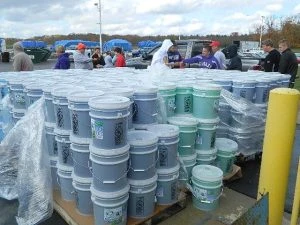 Whether it’s for school, sports or another cause, most kids find themselves participating in at least one fundraiser a year by the time they’re in school. In almost all cases, the kids aren’t given any training or direction on any aspect of sales – they just bring home the catalogs, order forms and a directive to sell as much as possible. Most kids are understandably reluctant. The idea of talking to people they don’t know, and asking them for something, is daunting. To make matters worse, many kids don’t even understand the specifics of why they’re doing it or how it will benefit the organizations.
Whether it’s for school, sports or another cause, most kids find themselves participating in at least one fundraiser a year by the time they’re in school. In almost all cases, the kids aren’t given any training or direction on any aspect of sales – they just bring home the catalogs, order forms and a directive to sell as much as possible. Most kids are understandably reluctant. The idea of talking to people they don’t know, and asking them for something, is daunting. To make matters worse, many kids don’t even understand the specifics of why they’re doing it or how it will benefit the organizations.
The negative impacts of this throwaway type approach to fundraising with kids can be significant. When done correctly, a child’s first fundraisers can be the start of a passion for philanthropy and volunteering. However, when they’re sent out without a clear idea of what they’re doing or how to do it, they may finish the fundraiser with a sense that they didn’t raise enough or participate fully. If this happens, their first response may be to not want to participate in future fundraisers. So how can you make fundraisers both fun and a learning experience for kids?
Most kids begin a fundraiser with a natural and infectious enthusiasm, and the first thing you, as a parent or leader, need to do is direct and build on that enthusiasm. How can you do that?
Set Goals
Many fundraisers have suggested targets, or offer incentives to kids that sell a certain amount of product. Look over the paper work, and determine a realistic target for the child to reach (the key word here is “realistic” – it’s always better to exceed the target than to fall short). Then, figure out how often you need to go selling to reach that goal, and pace your child’s selling efforts accordingly.
Knowledge Is Power
Before selling any product, your child should know all about it so they can effectively pitch it and answer questions. What is the product, exactly? What does it do? Why should people want to buy it? What are the benefits? Kids who are confident about their knowledge of the product will naturally sell more and feel better about what they’re doing.
Help Them Understand the Benefits
Does your child know WHY they’re selling? They may know they’re selling something for their school – but what exactly will the money do? If the school isn’t telling you, then ask. If your child is raising money for the American Heart Association or another organization, research what the organization does and how it helps people.
Sell It Right
Set up a strategy that includes a very basic sales script, so your child has a solid launching point for every interaction. Make sure you go door to door during hours that are safe for your child, and more convenient for the people you visit. Avoid the dinner hour, and don’t go out after 8:00 pm. Make sure that your younger children always go with an adult. If an older child or teenager wants to go selling, make sure they go in a group with other children. They can always split their sales when they work together.
Fundraising with children is a great way to get them involved with helping others and raising money for a good cause. Start smart – make sure the kids know why they’re selling, how what they’re doing matters and the common sense basics of sales, and they’re sure to have a wonderful fundraising experience every time while learning important life lessons.